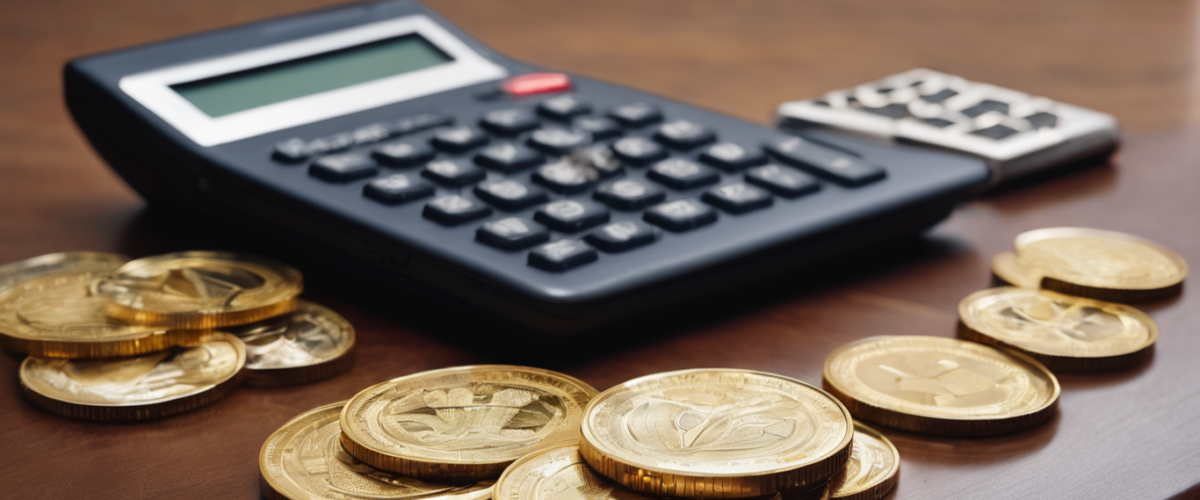Investing in physical-backed ETFs can be a smart move for those looking to enter the gold market. These types of ETFs offer a unique opportunity to invest in gold without having to physically own and store the precious metal. With the rise in popularity of ETFs, it’s important to understand the different types available, including physical-backed ETFs. In this beginner’s guide, we will explore the ins and outs of investing in physical-backed ETFs and how they can help you diversify your portfolio and potentially increase your returns. Whether you’re new to investing or looking to add some gold exposure to your portfolio, read on to learn more about the benefits and risks of physical-backed ETFs.
First, let’s define what a physical-backed ETF is.
Physical-backed ETFs, or exchange-traded funds, are a type of investment that holds physical assets, such as gold, and tracks the price movements of those assets. This allows investors to indirectly own and trade gold without having to physically own and store it themselves.
When it comes to buying and storing physical gold, there are a few options available. One option is to purchase gold bullion, which is essentially pure gold in the form of coins or bars. This can be done through a reputable dealer or broker. Another option is to open a gold IRA account, which allows investors to hold physical gold as part of their retirement portfolio. Both of these options require proper storage and security measures to protect your investment.
Now, let’s discuss different investment strategies for beginners when it comes to gold ETFs. One strategy is known as dollar-cost averaging, which involves investing a fixed amount of money into a gold ETF on a regular basis. This can help mitigate risk and potentially lead to higher returns over time. Another strategy is diversification, where investors spread their investments across different types of gold ETFs, such as those focused on different regions or types of gold mining companies.
When considering the current state of the gold market, it’s important to understand that like any investment, there are potential risks and rewards associated with investing in gold ETFs. While gold has historically been seen as a safe haven during times of economic uncertainty, it’s important to keep in mind that its value can also be affected by market fluctuations and other factors.
Investment Strategies for Beginners
When it comes to investing in gold ETFs, there are a variety of strategies that beginners can consider. These strategies involve different levels of risk and potential rewards, so it’s important to understand them before making any investment decisions.
Dollar-Cost Averaging: This strategy involves investing a fixed amount of money at regular intervals, regardless of the price of the ETF. This can help reduce the impact of market fluctuations on your investment.
Long-Term Holding: Some investors choose to hold onto their gold ETFs for longer periods of time, anticipating a potential increase in value over time.
Active Trading: For those looking for more active involvement in their investments, actively trading gold ETFs can be an option. This involves buying and selling ETFs based on market movements and trends.
Diversification: Another strategy to consider is diversifying your gold ETF investments with other assets such as stocks or bonds. This can help balance out your overall investment portfolio and potentially reduce risk.
It’s important to do your own research and consult with a financial advisor before choosing an investment strategy that best suits your goals and risk tolerance. With these strategies in mind, you can make informed decisions when investing in physical-backed ETFs for gold.
Buying and Storing Physical Gold
One of the main appeals of physical-backed ETFs for gold is the ability to invest in actual physical gold without having to worry about storage and safety. As a new investor, it is important to understand the different options for purchasing and storing physical gold.
The most common way to buy physical gold is through a bullion dealer or a precious metals dealer. These dealers offer various forms of physical gold, such as coins, bars, and rounds. It is important to research and compare prices among different dealers to get the best deal.
Another option for purchasing physical gold is through online platforms or exchanges. These platforms allow investors to buy and sell physical gold without physically holding it. However, it is important to research the credibility and security of these platforms before making any investments.
Once you have purchased physical gold, you will need to decide on a storage method. The most secure way to store physical gold is through a third-party vault or storage facility. This ensures that your gold is kept safe and insured against theft or damage. However, this option may come with additional fees.
Alternatively, you can choose to store physical gold yourself by keeping it in a safe or secure location. This option may save you money in storage fees, but it also comes with the risk of theft or damage.
Overall, it is important to carefully consider your options for buying and storing physical gold before making any investments. By understanding the different methods available, you can make an informed decision that best suits your needs and preferences.
Understanding Physical-Backed ETFs
Physical-backed ETFs, or exchange-traded funds, are an increasingly popular way for investors to gain exposure to the gold market. These funds are backed by physical gold, meaning that for every share of the ETF, there is a corresponding amount of physical gold held in a vault.
The way these ETFs work is simple. Investors buy shares of the ETF, which are then traded on a stock exchange like any other stock. The ETF then uses the money from investors to purchase physical gold and store it in a secure vault. The price of the ETF is directly linked to the price of gold, making it an easy and convenient way to invest in this precious metal.
One of the main advantages of physical-backed ETFs is that they offer investors exposure to the gold market without the hassle of buying and storing physical gold themselves. This makes them a great option for new investors who may not have the resources or knowledge to invest in physical gold directly.
However, it’s important to note that not all physical-backed ETFs are created equal. Some may hold different types of gold, such as coins or bars, which can affect their performance and fees. It’s crucial for investors to do their research and understand exactly what type of gold their chosen ETF holds.
In addition, it’s important to understand that investing in any type of gold comes with risks. The price of gold can be volatile and can be affected by various economic and political factors. It’s important for investors to carefully consider their investment goals and risk tolerance before choosing a physical-backed ETF as part of their portfolio.
Assessing Risks and Rewards
When it comes to investing in physical-backed ETFs for gold, it is important to understand the potential risks and rewards associated with this type of investment. As with any investment, there are both advantages and disadvantages that should be carefully considered before making a decision.
One of the main benefits of investing in physical-backed ETFs for gold is the convenience it offers. Unlike buying physical gold, which requires storage and insurance, investing in gold ETFs allows you to own a share of physical gold without the hassle of storing and protecting it yourself. This also makes it easier to buy and sell as you please, providing more flexibility in your investment strategy.
However, with convenience also comes potential risks. One of the biggest risks associated with gold ETFs is their dependence on market trends. If the price of gold declines, the value of your investment will also decline. Additionally, since gold ETFs are traded on exchanges, they are subject to market volatility and can be affected by factors such as economic conditions, political events, and currency fluctuations.
Another potential risk to consider is the fees associated with gold ETFs. While these fees may seem small, they can add up over time and have an impact on your overall returns. It is important to research and compare different ETFs to find ones with lower fees.
On the other hand, there are also potential rewards when investing in physical-backed ETFs for gold. Gold has historically been seen as a safe-haven asset during times of economic uncertainty or inflation. This means that if there is a downturn in the stock market or a weakening of the currency, the value of gold may increase, providing a hedge against these risks.
Furthermore, investing in gold ETFs can also offer diversification to your portfolio. By adding gold to your investment mix, you can potentially reduce overall portfolio risk and increase potential returns.
Ultimately, it is important to carefully assess the risks and rewards associated with gold ETFs before making any investment decisions. Consider your own financial goals and risk tolerance, and do thorough research on different ETF options to find the best fit for your investment strategy.
Conclusion: Investing in physical-backed ETFs for gold can be a great way for beginners to enter the gold market. By understanding the basics of physical-backed ETFs, knowing how to buy and store physical gold, and utilizing different investment strategies, you can make informed decisions when it comes to your gold investments. Just remember to always do your research and consult with a financial advisor before making any investment decisions.



